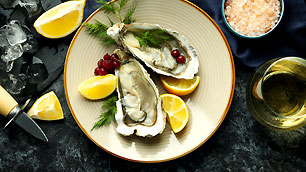Japanese Delights
Sashimi
Sashimi, a jewel in the crown of Japanese gastronomy, is the epitome of raw fish or seafood preparation. This refined dish has been cherished in Japan for generations and has captured the hearts of food enthusiasts globally. At its essence, sashimi celebrates simplicity and premium ingredients, allowing the pure, unadulterated flavors of the sea to take center stage.
Chef's Notes:
- Sashimi is a Japanese culinary masterpiece featuring thin slices of raw fish or seafood
- The key to exceptional sashimi lies in the freshness and superior quality of the ingredients
- Mastering the art of slicing and presentation elevates the sashimi dining experience
What is Sashimi?
Sashimi consists of expertly sliced raw fish or seafood, traditionally served without any rice accompaniment. Unlike its cousin sushi, which marries raw fish with vinegar-seasoned rice, sashimi stands proud on its own. The term "sashimi" literally means "pierced flesh," a nod to the ancient fishing technique of spearing fish.
The allure of sashimi is found in its minimalist approach. With just a handful of complementary elements, the spotlight remains firmly on the fish's sublime texture and flavor profile. Popular choices for sashimi include the likes of tuna, salmon, yellowtail, and mackerel.
Selecting Fish for Sashimi
The cornerstone of exceptional sashimi lies in the selection of top-tier, impeccably fresh fish. Always seek out sashimi-grade or sushi-grade fish, which undergoes a freezing process to eliminate potential parasites. This practice ensures both safety and unparalleled quality.
When on the hunt for the perfect fish, keep an eye out for:
- Eyes that are bright and clear
- Flesh that's firm to the touch and bounces back when pressed
- An aroma reminiscent of the ocean, not overly fishy
- Rich, vibrant coloration
For home chefs, sourcing from a trusted fishmonger or specialized Japanese market is advisable. These experts can offer guidance on the freshest catches and proper handling methods.
Essential Tools for Sashimi Preparation
To craft sashimi worthy of a high-end restaurant in your own kitchen, arm yourself with these crucial tools:
- Sharp knife: A long, slender blade like a yanagiba is optimal, though a razor-sharp chef's knife can suffice
- Cutting board: A spacious, sturdy surface is non-negotiable
- Tweezers: For extracting any lingering bones
- Ice: To maintain the fish's chill during the preparation process
Investing in a premium knife will significantly elevate your sashimi-making prowess. A keen edge facilitates clean, precise cuts that enhance both the texture and visual appeal of the fish.
Preparing the Fish
Prior to slicing, ensure your fish is immaculately clean and free of bones. If you're not confident in your filleting abilities, don't hesitate to enlist your fishmonger's expertise. Here's a basic roadmap for preparation:
1. Give the fish a thorough rinse under cold water and pat until completely dry
2. Meticulously remove any lingering scales or skin
3. Carefully inspect for and extract any small bones using tweezers
4. Keep the fish well-chilled until the moment you're ready to slice
Slicing Techniques
The method you employ to slice sashimi can profoundly impact its texture and flavor profile. Different species of fish may call for distinct cutting approaches. Here are some widely used techniques:
- Hira-zukuri: Classic rectangular slices, approximately 1/4 inch in thickness
- Usu-zukuri: Exceptionally thin, diagonal cuts
- Kaku-zukuri: Petite cubes, frequently employed for tuna
Always slice against the grain of the fish to achieve the most pleasing texture. Employ a single, fluid motion with your knife to create immaculate cuts. Mastering these techniques requires both practice and patience.
Presentation and Garnishes
The art of sashimi presentation is a discipline unto itself. Traditionally, an odd number of slices are artfully arranged on a plate, often in circular or linear formations. Common accompaniments include:
- Finely shredded daikon radish (tsuma)
- Aromatic shiso leaves
- Tangy pickled ginger (gari)
- Fiery wasabi
- Savory soy sauce
These garnishes not only enhance the visual appeal but also harmonize with the flavors of the fish. The tsuma serves a dual purpose, helping to wick away excess moisture and preserve the fish's freshness.
Serving Sashimi
Sashimi should be served promptly after preparation to ensure peak freshness. Accompany it with petite dishes of soy sauce and wasabi. Some connoisseurs prefer to blend a touch of wasabi into their soy sauce, while others apply it directly to the fish.
Traditionally, sashimi is enjoyed with chopsticks. Delicately dip the fish into soy sauce, taking care not to overwhelm it. The objective is to accentuate, rather than mask, the natural essence of the fish.
Popular Types of Sashimi
While a diverse array of fish can be transformed into sashimi, certain varieties are especially revered:
- Maguro (Tuna): Widely hailed as the sovereign of sashimi
- Sake (Salmon): Celebrated for its luscious, buttery consistency
- Hamachi (Yellowtail): Offers a mild flavor coupled with a firm texture
- Tai (Sea Bream): Boasts a delicate taste, often presented with its skin intact
- Ika (Squid): Provides a chewy texture with subtle sweet notes
Each fish variety presents a unique flavor profile and texture, paving the way for a multifaceted sashimi experience.
Health Benefits of Sashimi
Sashimi can be a nutritious component of a balanced diet. It's rich in high-quality protein and omega-3 fatty acids, which offer benefits for cardiovascular and cognitive health. However, it's prudent to consume raw fish in moderation due to potential risks associated with foodborne illnesses or mercury content.
Nutrition Facts
Here's an approximate nutritional breakdown for a 100g portion of salmon sashimi:
-
- Calories: 208
- Protein: 20g
- Fat: 13g
- Omega-3: 2.3g
- Vitamin D: 13.8µg
- Vitamin B12: 2.8µg
Note that nutritional values may fluctuate depending on the specific fish variety used.
FAQs
Is it safe to eat sashimi?
When prepared correctly using premium, sashimi-grade fish, sashimi is generally safe for consumption. However, there's always a slight risk associated with eating raw fish. Pregnant women, young children, and individuals with compromised immune systems should err on the side of caution and avoid raw fish.
Can I freeze fish for sashimi?
While freezing can effectively eliminate parasites, it can also compromise the fish's texture. For optimal results, opt for fresh, never-frozen fish when preparing sashimi. If freezing is unavoidable, a commercial blast freezer will yield the best outcome.
What's the difference between sashimi and sushi?
Sashimi consists solely of sliced raw fish, whereas sushi incorporates vinegared rice combined with various ingredients, which may or may not include raw fish. Sashimi is invariably served without rice.
How long can sashimi be kept?
For optimal flavor and safety, sashimi should be consumed immediately after preparation. If storage is necessary, keep it in the coldest section of your refrigerator and consume it within a 24-hour window.
Can I make vegetarian sashimi?
While traditional sashimi is crafted from fish or seafood, innovative chefs have developed plant-based alternatives using ingredients such as tomatoes, avocado, or konjac to replicate the texture of fish.





























 Gastronomy Cities
Gastronomy Cities
 Amazing Food
Amazing Food
 Chef's Talk
Chef's Talk